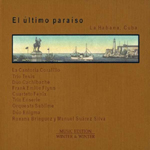This review page is supported in part by the sponsors whose ad banners are displayed below |
 |
 |
Paul McGowan is a strong advocate for the no-preamp league. To facilitate this the DirectStream DAC offers an elaborate digital volume control of 20 bits. As all bits are equal in DSD unlike PCM, this volume control is truly lossless. Atop this control accessible by remote, the DAC has an option to set maximum output level. This can be useful for power amplifiers with very sensitive inputs or to play it safe with high-power amplifiers.
The first combination we tried used a PS Audio PWT transport as source which is another FPGA-based design. Here we confess that our PWT had been inactive for quite some time. Spinning shiny discs no longer matched our acquired tastes for achievable sound quality. Whatever we had tried involving legacy disc spinning came out veiled and lacking in gusto, in short sounded unattractive. Our cravings for proper sound quality were far better satisfied by vinyl and streaming music via our Phasure XXHighEnd music PC and matching NOS1 DAC, the latter only when its software settings were notched down from the max 32/768kHz processing rate i.e. 16 x oversampling to 32/176.4kHz or just 4 times upsampling. That latter setting delivers the most dynamics with startling gunshot potential and deep powerful bass.
|
|
|
To connect the PWT to the new DirectStream DAC, we used their proprietary I²S option. We left the included power cord and instead picked a Nanotec PS #306-based cable with Furutech termination from our stockpile. PS Audio recommends to let the DAC settle in for at least 30 minutes after each power down. Since it was the deck’s maiden trip, we let it settle longer. After a good night’s beauty sleep we checked that the output via remote was at zero. With a long balanced Nanotec interconnect, the DAC coupled directly to the Hypex Ncore 1200 monos feeding via Nanotec SP#777 our large Arcadian Audio Pnoe hornspeakers. From the Ncore amps another loudspeaker connection fed the Zu Audio Submission subwoofer for everything below 42Hz.
|
 |
It felt a little odd to us to load a CD again but once the tray closed and the PWT started to load the first part of the music to memory and the play button was hit, the actions became strangely familiar again. Slowly we brought up the volume by remote and music started to play. And that struck us like lightning. We played El Último Paraíso: la Habana Cuba on the Winter&Winter label. On this album the producers—there are several—go on a musical stroll through the streets of Havana and the listener becomes their aural witness. Normally this CD had been just nice and the illusion of walking the streets and hearing music come from behind open doors and windows wasn’t too bad. But what happened now was beyond our expectations. Maybe we had been lulled into a bit of been-there-done-that reviewer fatigue but the DirectStream’s handling of this CD became a rude wakeup call and put us back on edge to eat crow. |
|
Damn, the performances of the various groups and soloists were so real and at such dynamic range, it was hard to believe that the source material was a simple 16/44.1 Redbook CD. So far this disc hadn’t even made our priority list for ripping to HHD. With so many CDs still in the drawer cabinets and the ripping job being a slow and tedious process, this one had been duly left out. This omission was soon repaired now and playback via our reference XXHE PC/NOS1 combination sounded very similar indeed even if the workflow involved to get it to play is a real PITA compared to the PWT/PWDSD experience. In our personal CD storage and that of many other music lovers hide so many forgotten musical jewels that were hardly if ever played again after their initial purchase. They just sit there gathering dust.
|
|
|
|
| With this fresh reality check heating up our blood, we now sifted through the thousands of CDs which still shared this sad fate and indeed found many that were rehabilitated. One we must mention as a standout for recording and production is Jan Akkerman’s Fromage A Trois, a limited edition capture from his 2005 Dutch theatre tour. The guitar maestro nods his head in homage to the great Django Reinhardt by playing a Maccaferri D-hole but doesn’t forget the iconic Hocus Pocus on electric guitar as a closer for this disc |
|
|
Whilst enjoying the newly recovered wealth of great music unleashed by the remarkable DSD DAC, we received an AbysSound ASX 2000 power amplifier from Poland for review. Once hauled upstairs, this behemoth 80wpc class A transistor amp replaced our Class D Ncore amps for a quick proof of life. Being everything the Dutch monos are not—one piece, big, heavy, room heating and an electrical meter accelerator—the AbysSound proved to absolutely be in the Krell and Pass league of effortless performance. The La Habana CD now became scarily realistic in its dynamics (is realism scary?). An interlude with an old truck passing by now hurtled through the room The performance once again had us appreciate that in hifi, it’s always about signal subtractions. Diminish or avoid subtractions and what’s left is the glory.
Less overlay of noise from clean power enhances this reveal and going to single-bit processing enhances dynamics. In this instance, whatever exactly the DirectStream DAC did or didn’t do vis-à-vis more conventional converters unearthed hidden depths of plain 16/44.1 Redbook media. It removed our blinders and ear plugs. It turned out that it had been up for grabs all along. We simply lacked the proper means to retrieve it.
|
 |
  |
 |